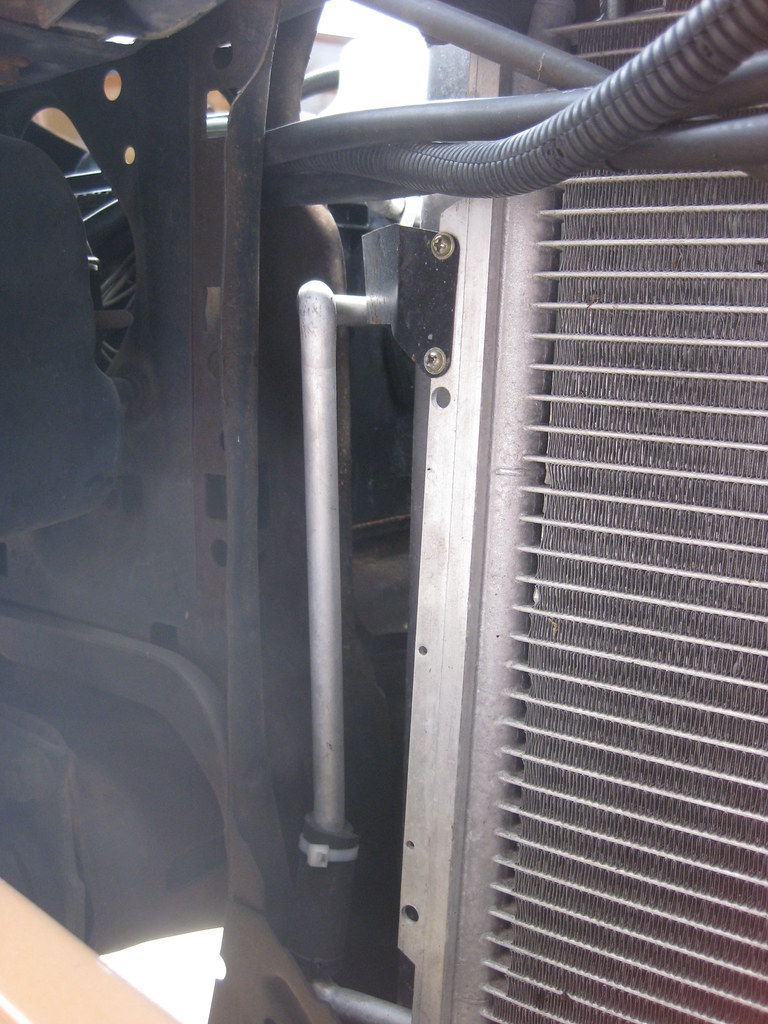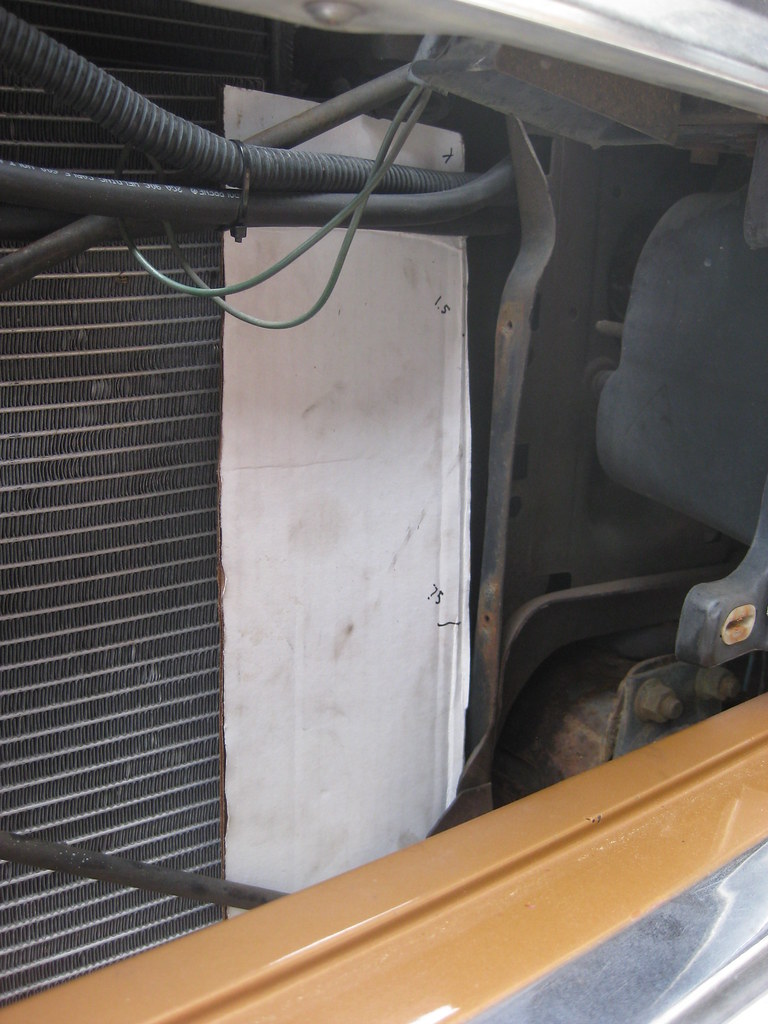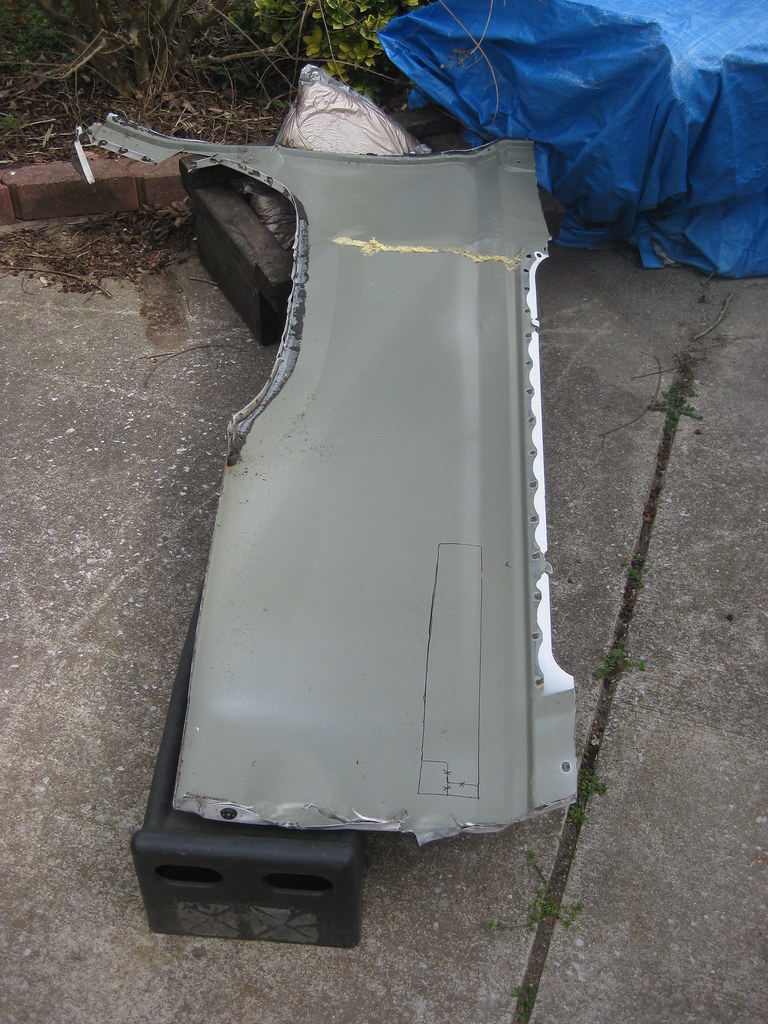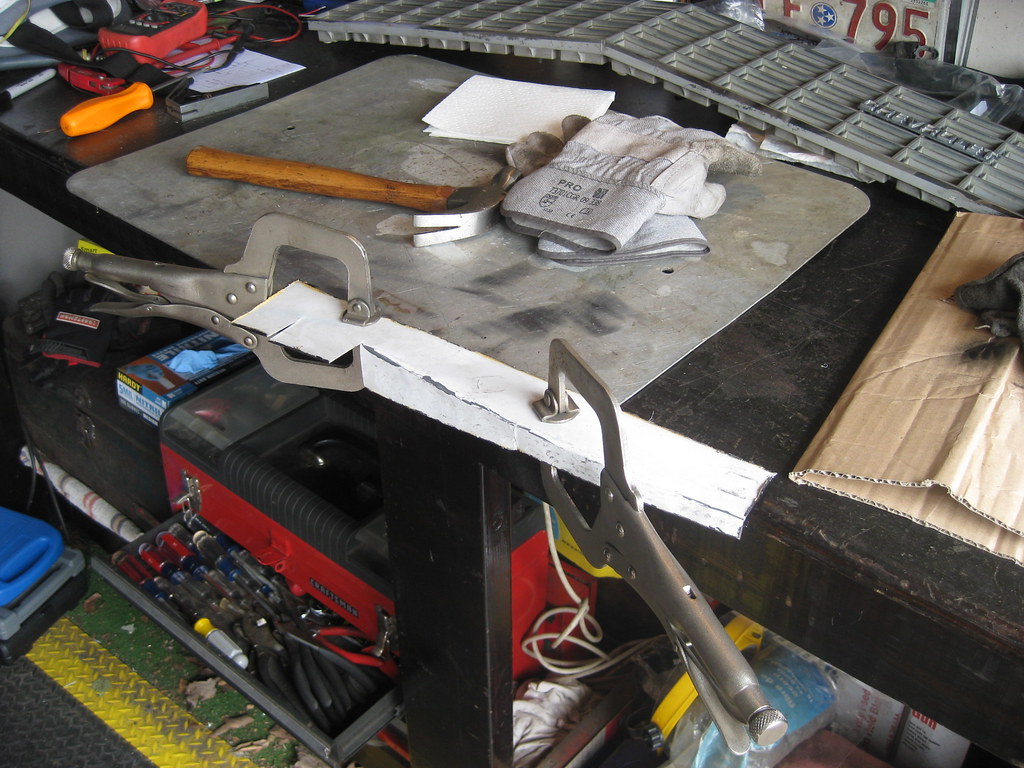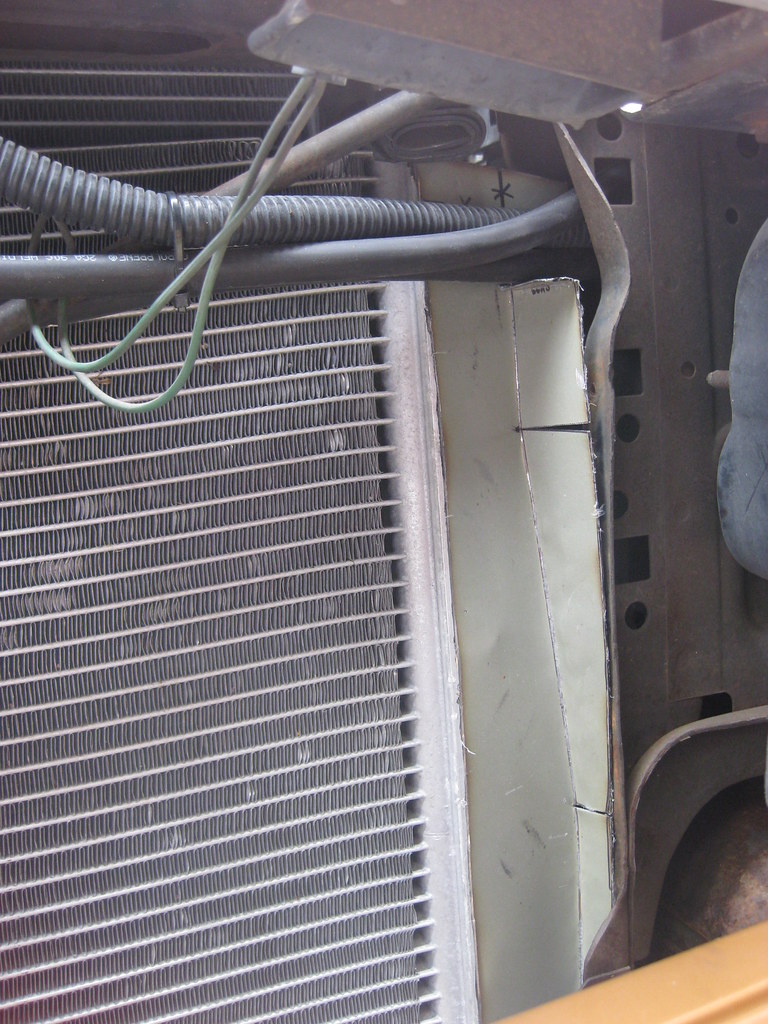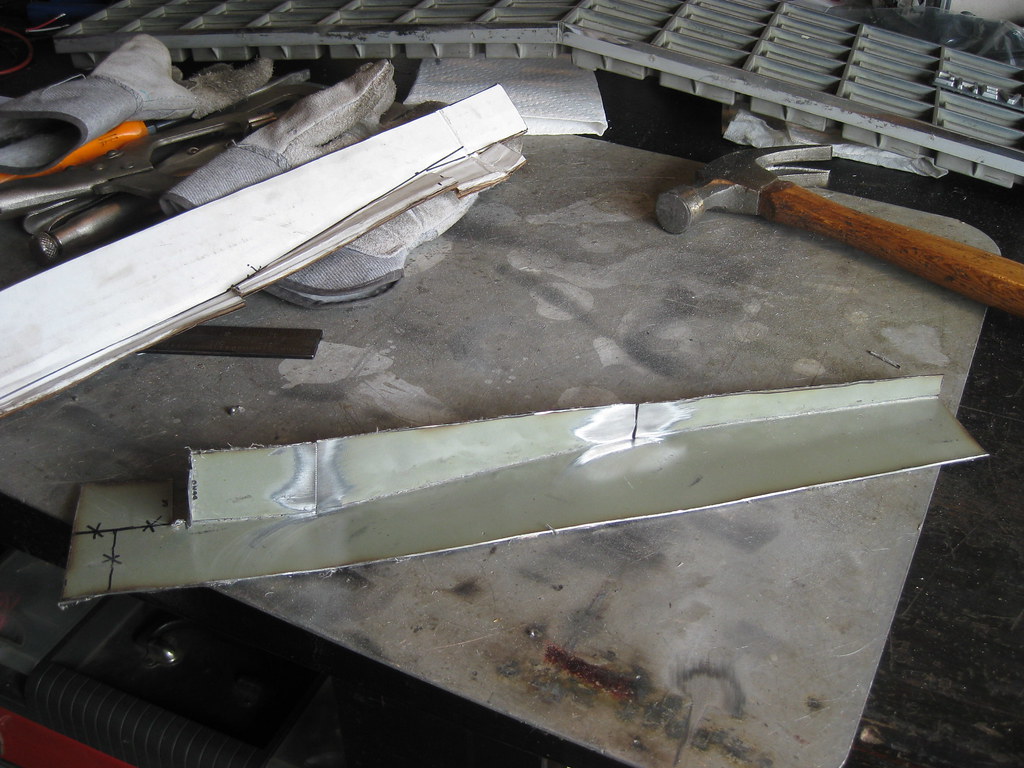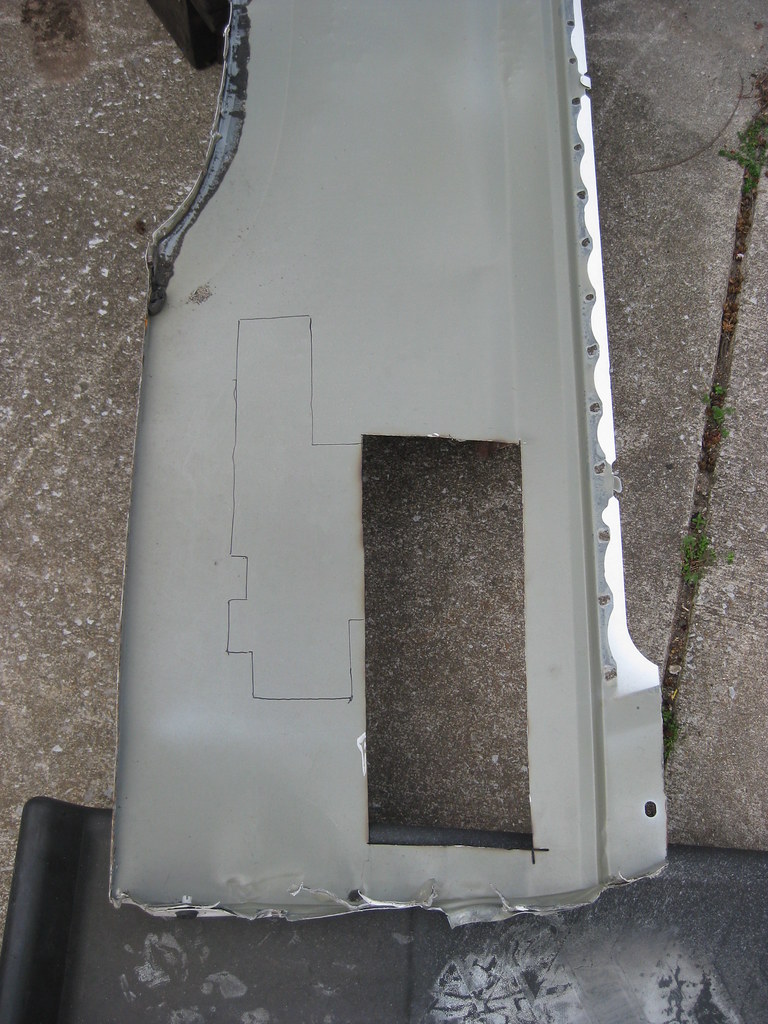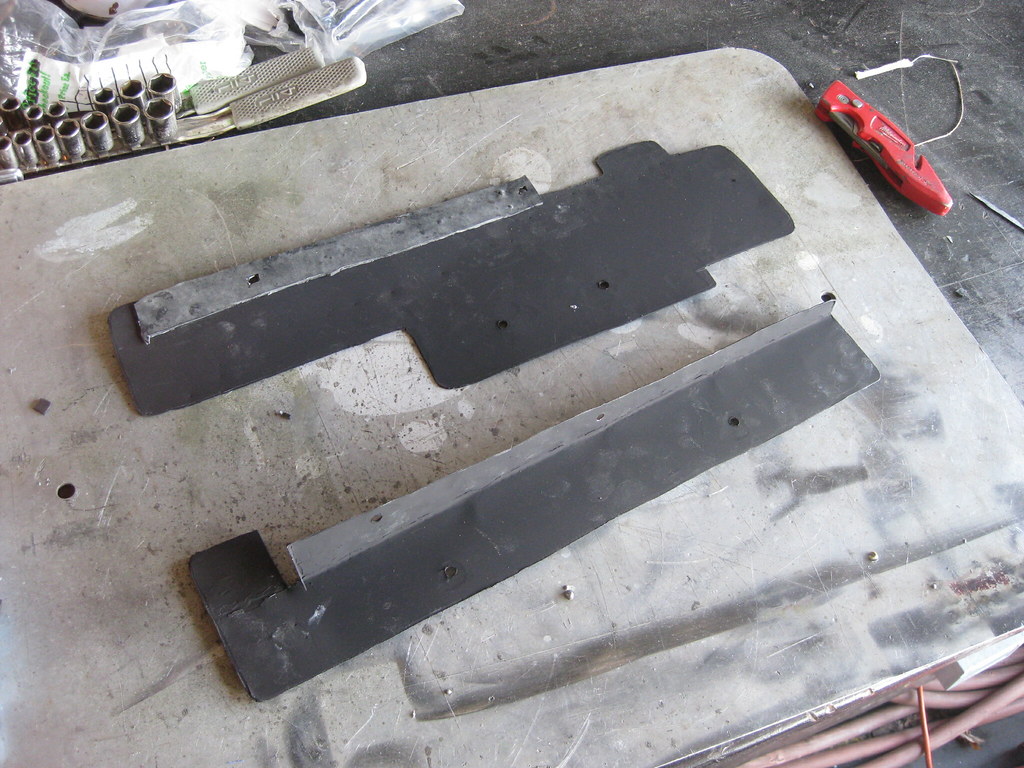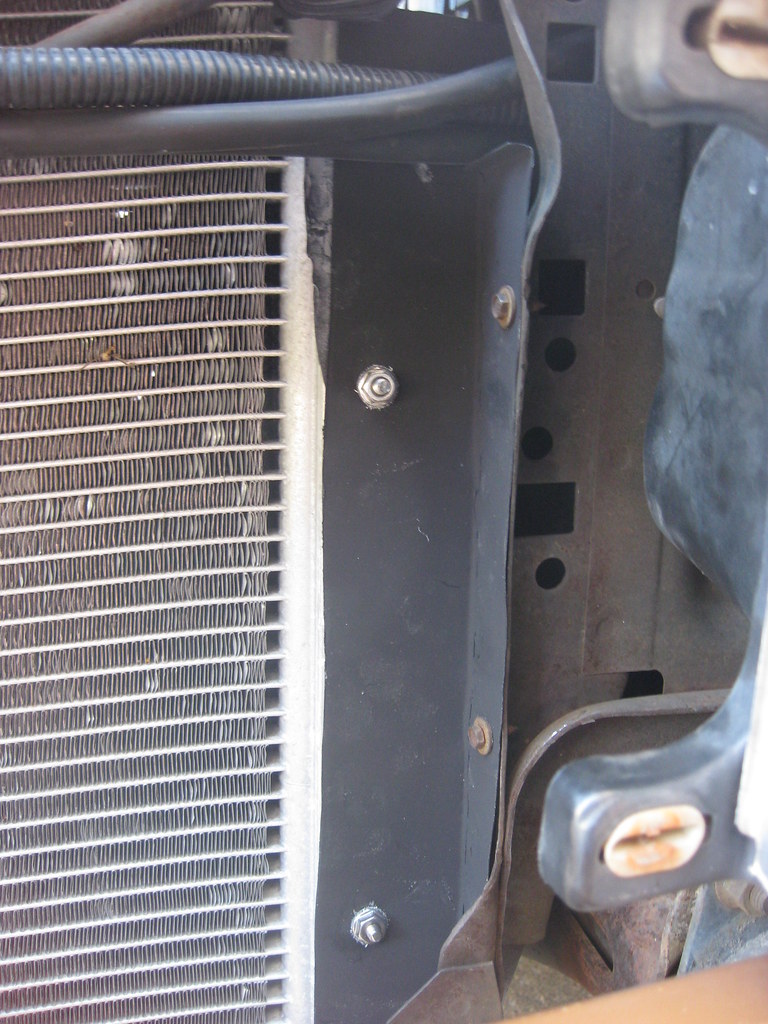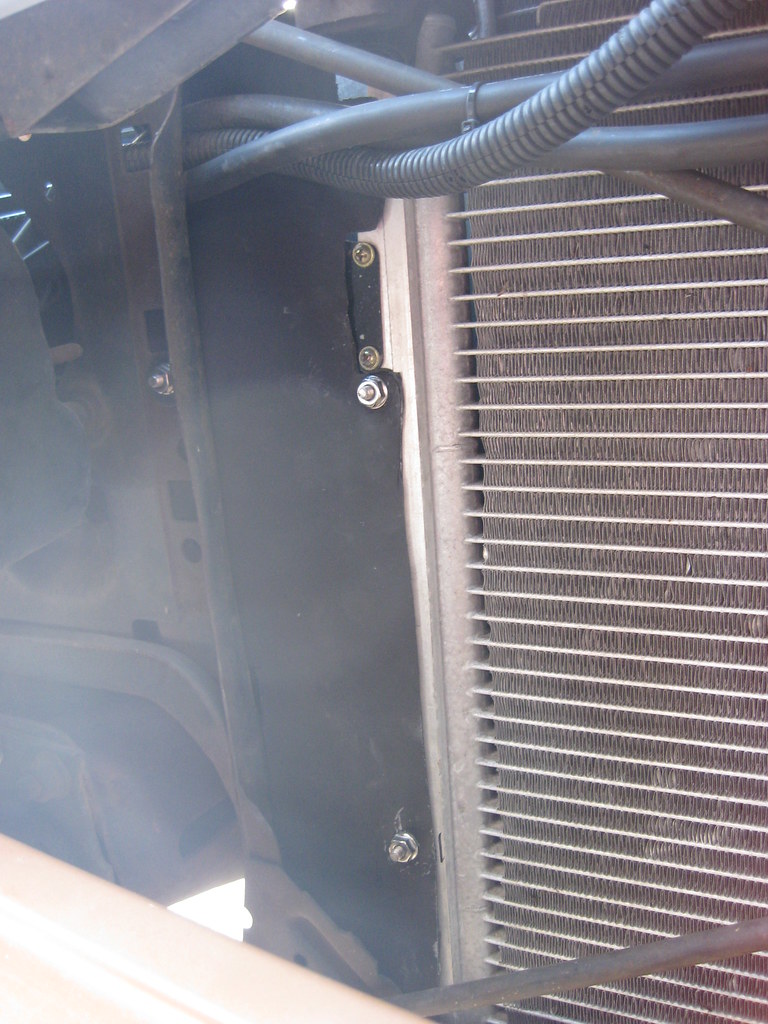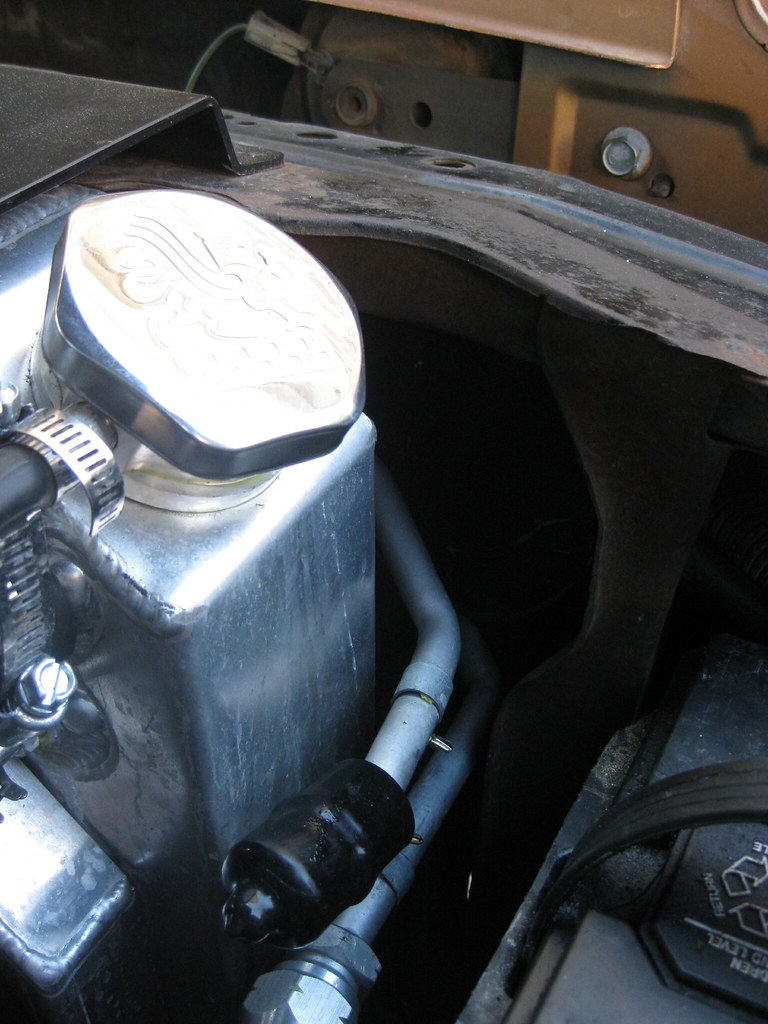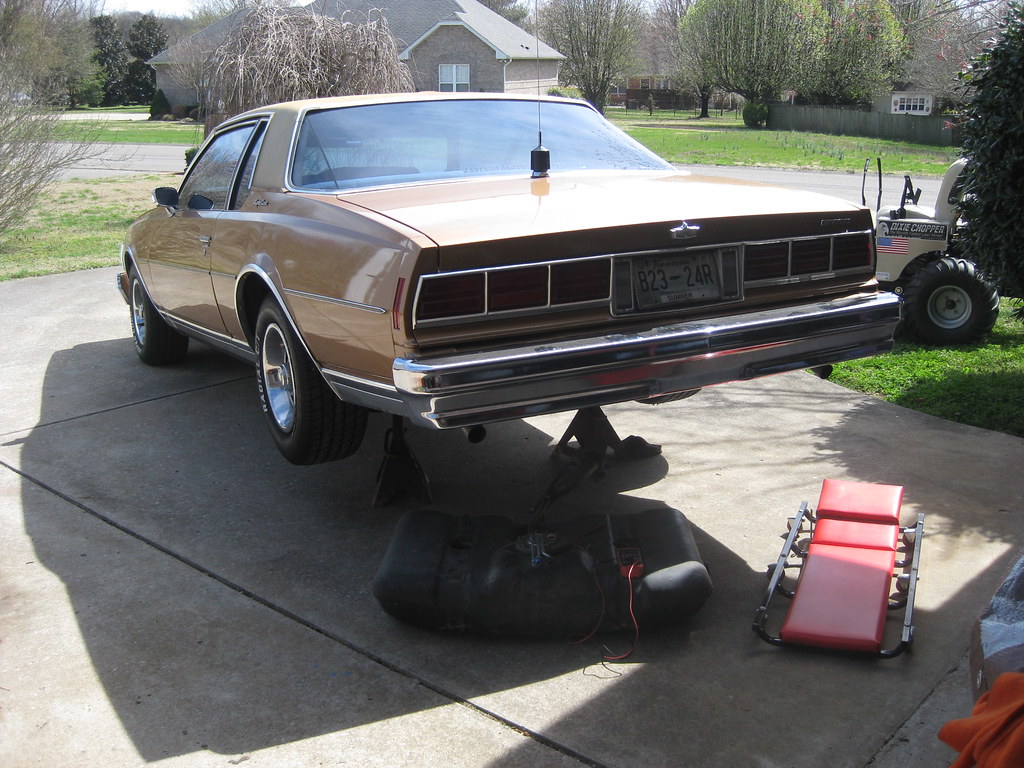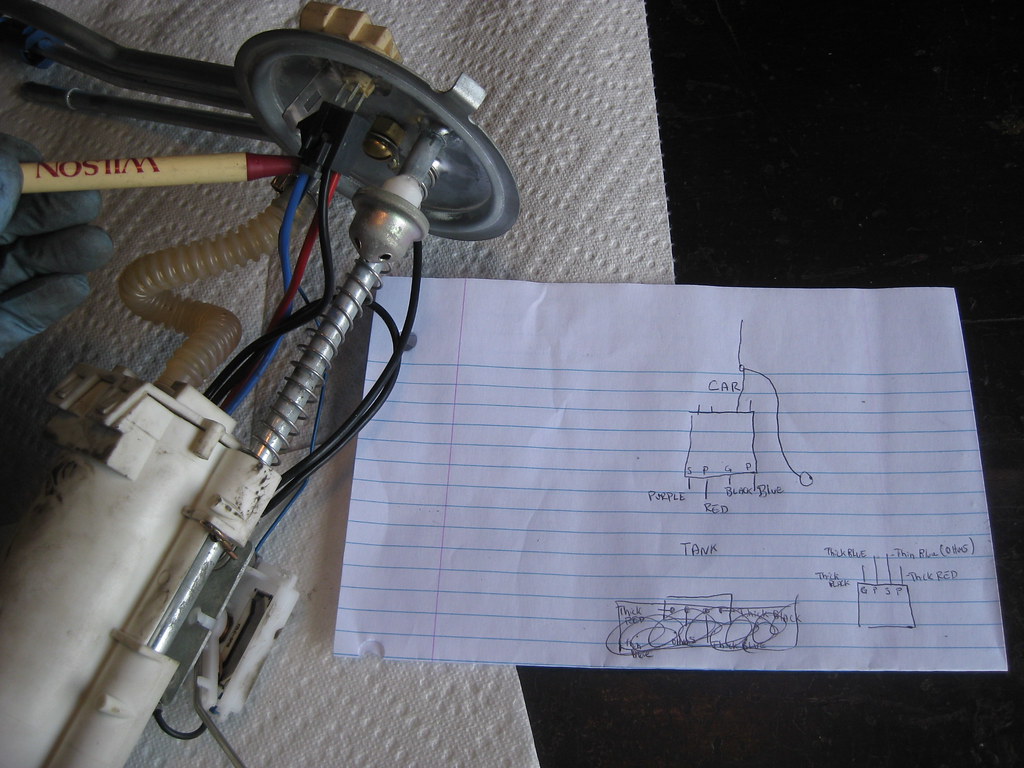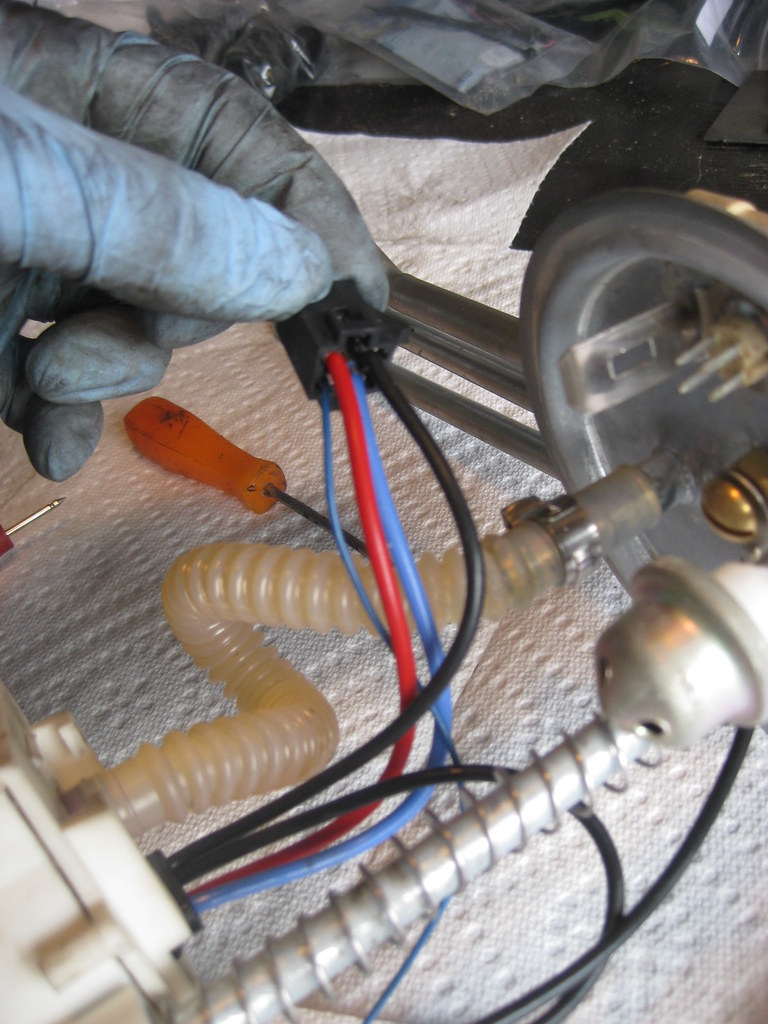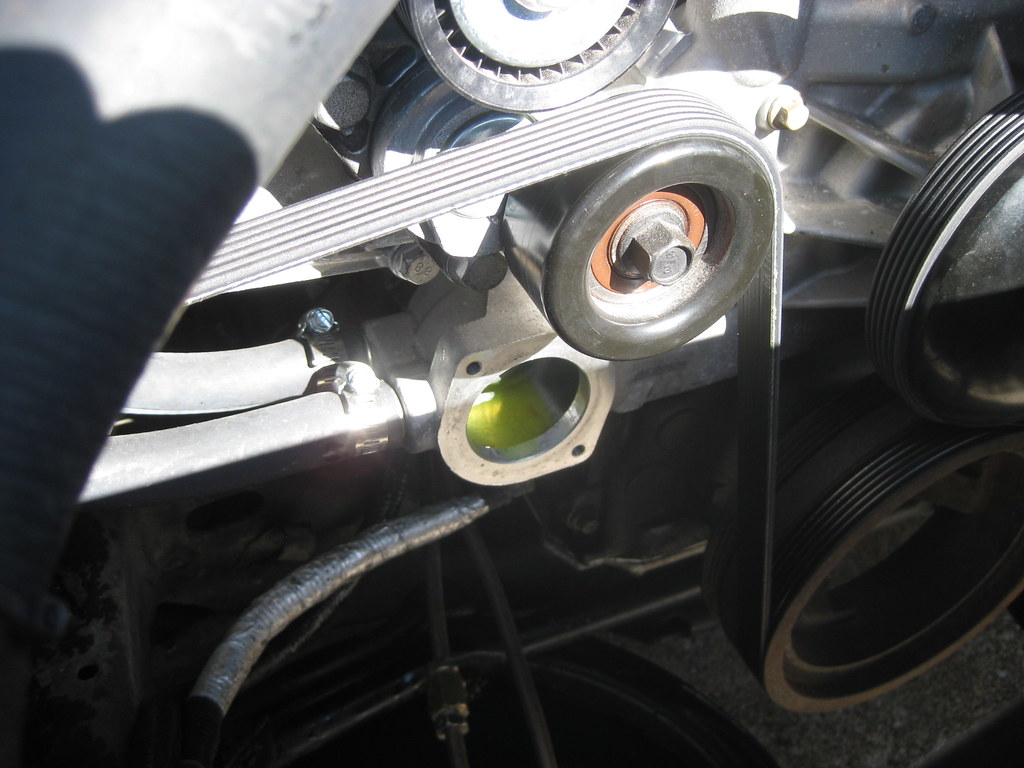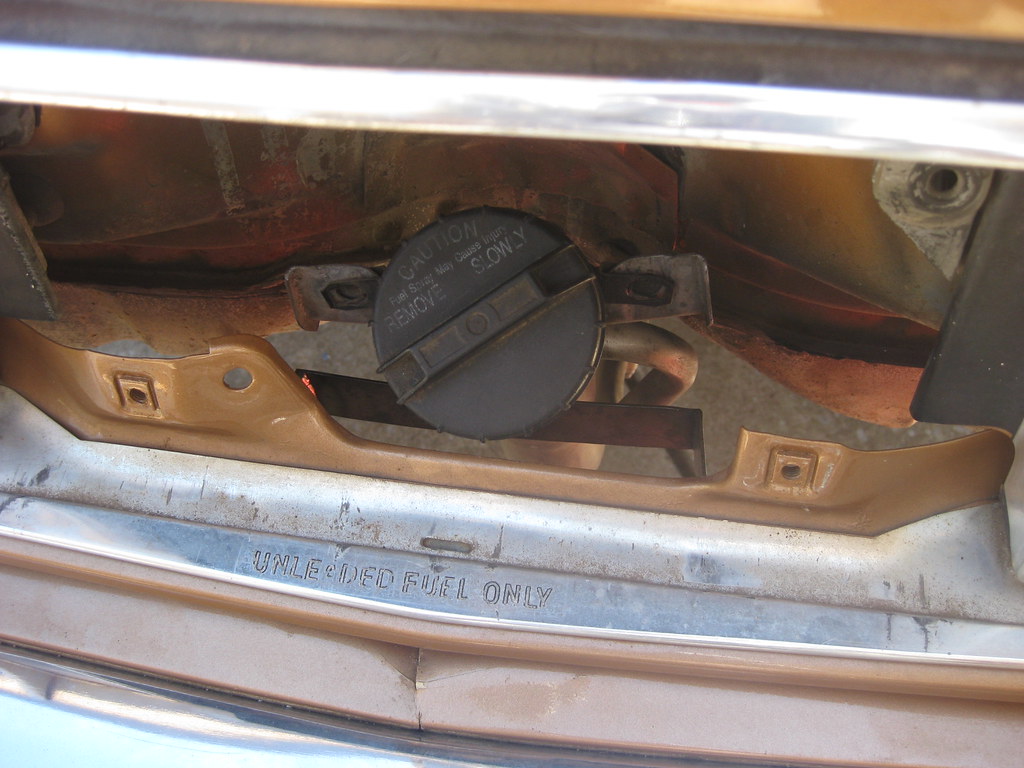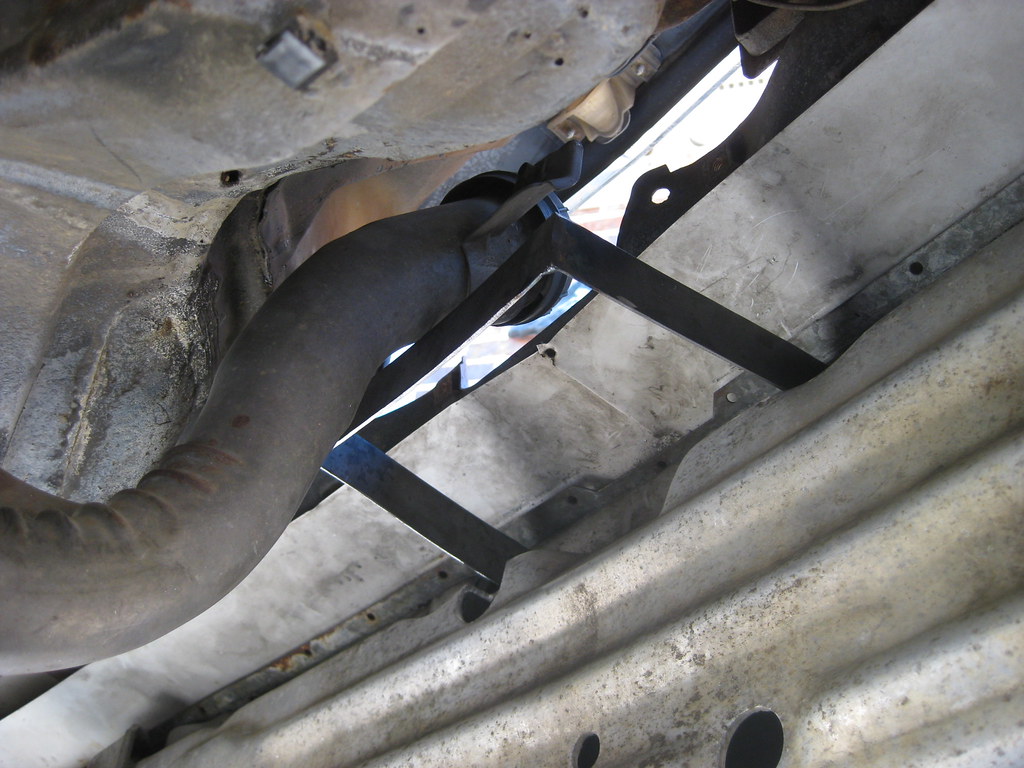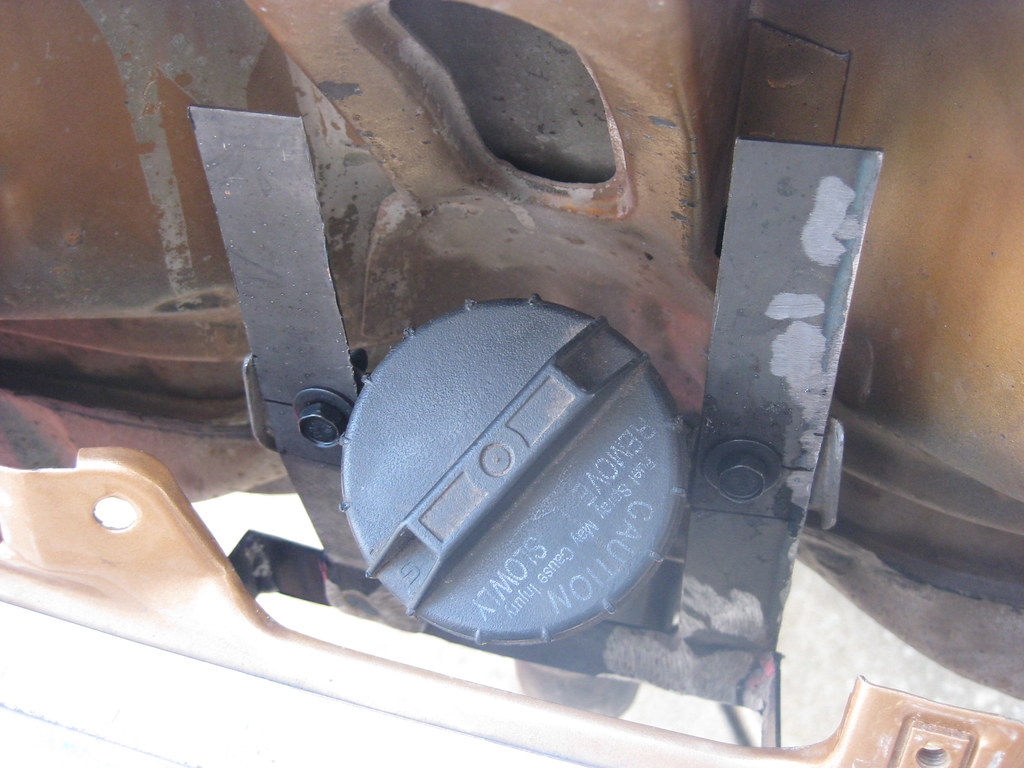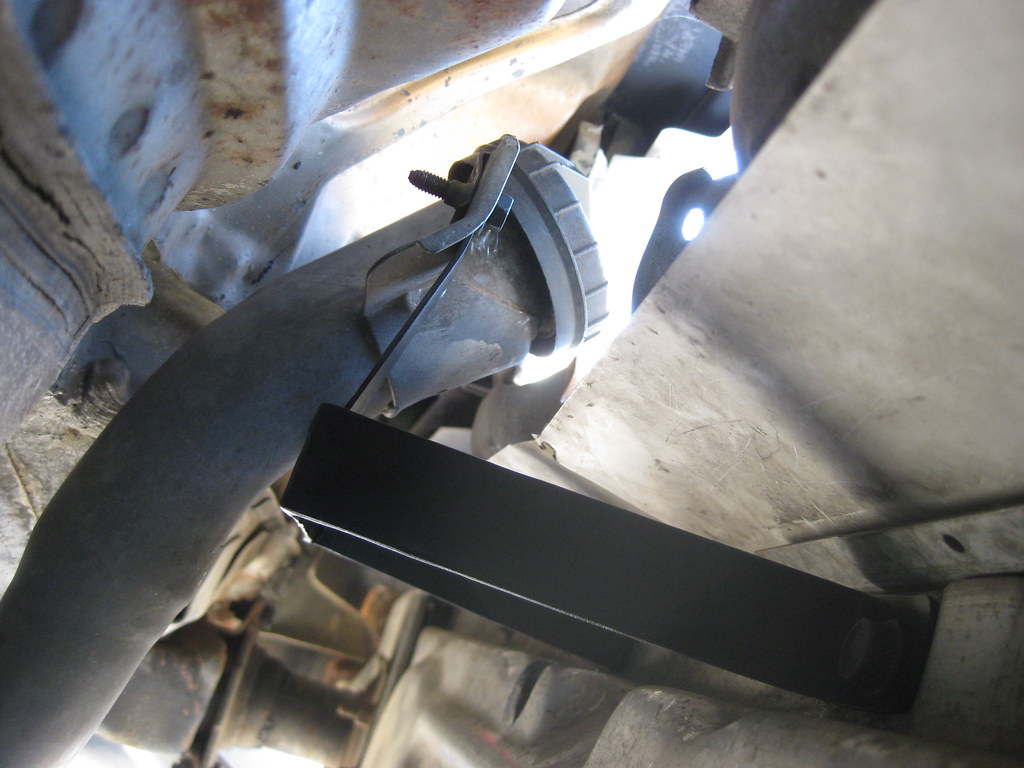I had to delay progress on the car for quite a while. I was about to lose accrued vacation time at work so I took a week vacation and built bunk beds for the girls. I had hoped to begin this project after The Caprice was finished, but several set backs has caused The Caprice project to take longer than I had planned. My father-in-low let me use his wood shop for the project. The problem was that he lives 3 1/2 hours away in Indiana. It was 10 and 12 hours days for over a week and just like all other projects, took longer than I had hoped and I wasn't able to get finished. After spending about 80 hours that week working on the project I then had to drive back up on the following three weekends to finish the project. The worst part was the final weekend when I drove back up after letting the paint cure for a week. It had been raining all week and the ground was so soft even the gravel was sinking in the mud. I ended up getting stuck in the mud at the shop while trying to load all the pieces in a huge storm. I had to borrow a chain from a neighbor to pull my Suburban out of the mud and by the end I had to go to a local store and buy all new clothes for the trip home. Here are some photos of that effort.

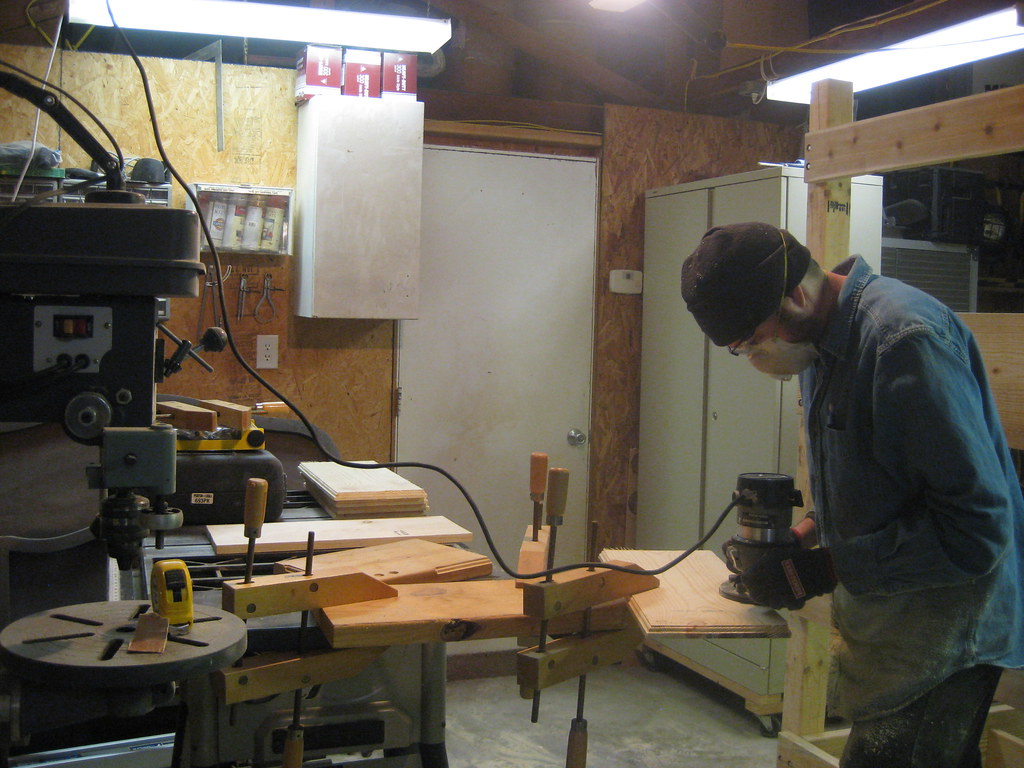
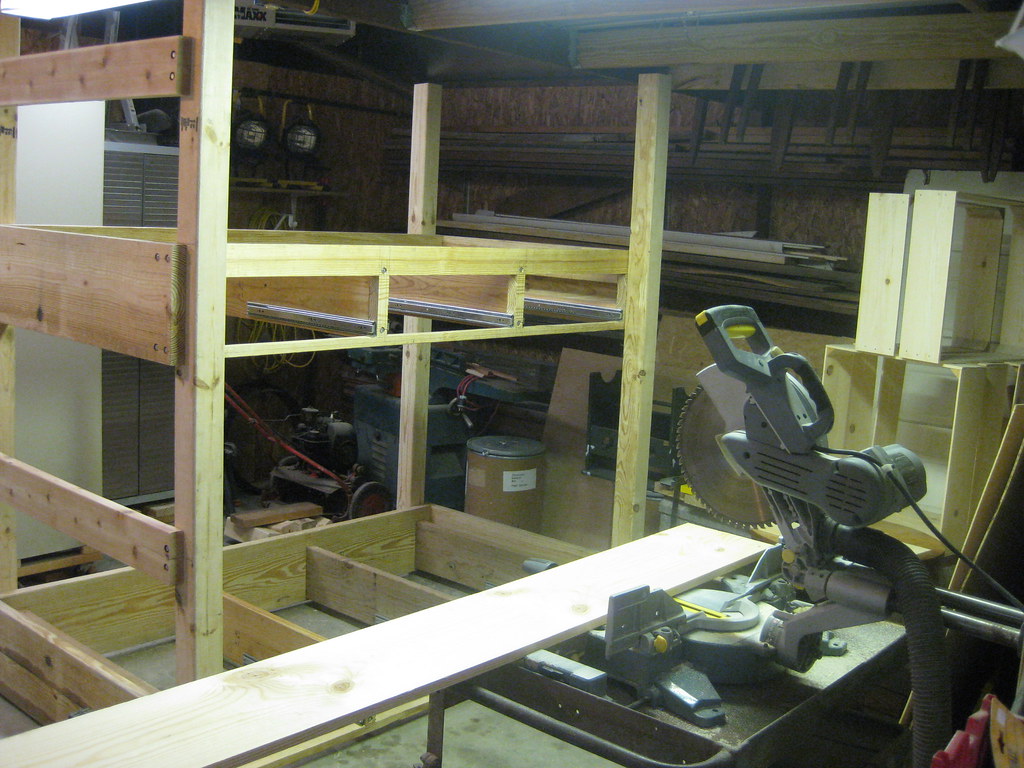

Because of my erratic schedule for the last month the following projects were not all worked in order. I just had to work on different parts when I was able, but in order to make them more coherent I'm going to group the photos of each step together.
When my tuner drove The Caprice to his shop for the dyno tune he started having issues with the pedal going dead. We finally decided that the cruise control wires, which I haven't yet hooked up, were shorting out and causing the problem because after moving them out of the way the problem went away. I picked the car up from his house and drove it home where it sat in the driveway for a few days. I finally got the back bumper reassembled and back on the car, which ended up taking several days because I had neglected to notice ahead of time that the bumper was held together with two different length bolts and I had trouble finding them. When I did finish the bumper I decided to drive the car into work for the first time. The weather was frigid cold, in the 'teens, but I decided to try it out anyway. When I pulled the car around to the front of the house the pedal went dead and blocked in April's car. After trying everything I could think of I unplugged the throttle body and plugged it back in and it began working so I thought I had a bad connection at the throttle body. The next day I warmed the car up, moved all the car seats for the girls over and when we started to take off the pedal was dead again. As frustrating as it was I was thankful it died in the driveway. For the next couple of days I used what little time I had to read as much as I could about the problem and having already tested my pedal and tac module decided to remove the harness between them and do a continuity test. Luckily, I found one connection with no continuity. I say luckily because had there been no problem with the harness it would have been a lot of work to continue to diagnose the issue. It turned out there was a cut wire in the harness.
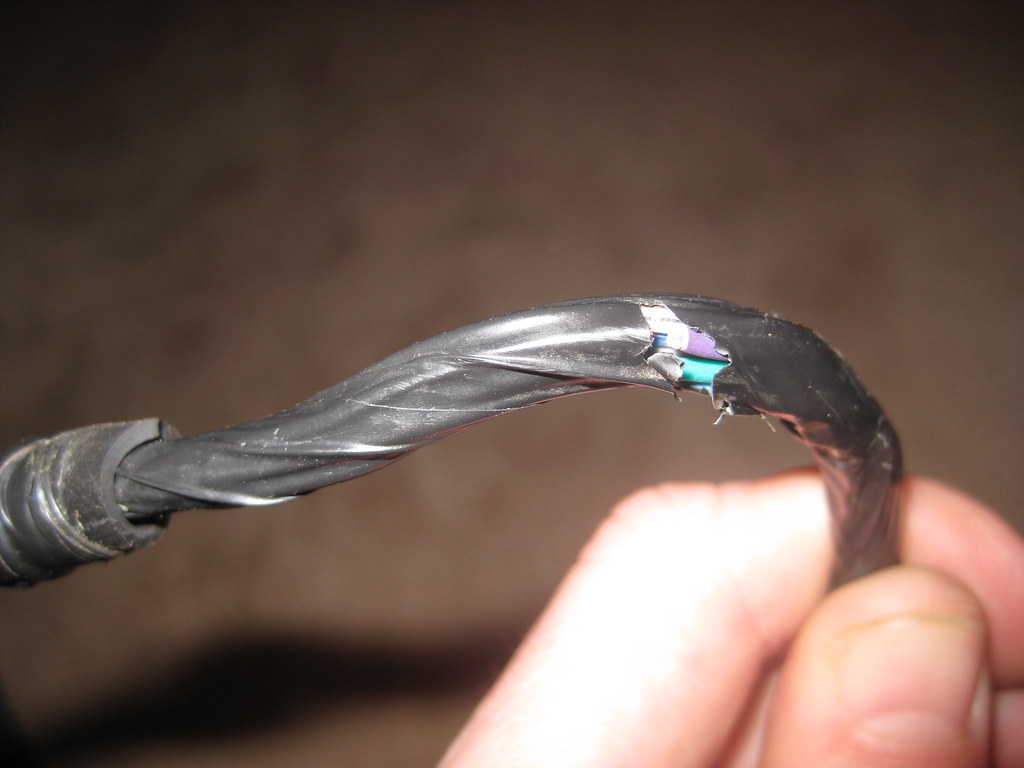
The ironic thing about this harness having a wire cut is this; The tac module was under the hood on the original '04 Avalanche but I mounted the tach module under the dash, much closer to the pedal. Because of this the harness was much longer than I needed. I had considered shortening it, but I thought that since it was original I should leave it alone to lessen the chances of me messing it up and causing a problem. After all of the cutting and soldering and splicing on the entire original harness, the one piece of harness that I
didn't end up modifying is the part that caused me trouble. If I had shortened it to begin with I would have cut out the problem area and probably never have noticed the damaged wire. I bought all of these pieces from a salvage yard that had separated and cataloged all them, so even though they were all from the same vehicle they had been stored separate. I suspect that it was during this time that the harness had been damaged. The below picture is after I removed the factory wire loom and black tape and shows that the one wire was completely cut in half, though no other wires had any signs of damage at all.
Even though I thought I was done with splicing wires I once again had to reconstruct the solder station, though this time a smaller version.
Since I already had to splice one wire I decided to go ahead and shorten the entire harness.
After getting everything back together, the picture below shows how much of the harness I cut out.

As I began to drive the car to work I noticed that the high speed fans were coming on even though the highest outside temperatures that week were in the 20s. I was at first concerned that the car was overheating. After looking into the issue I finally determined that the system was not setup correctly. First, the parts house didn't have the correct thermostat back when I had bought a new one for the engine so I ended up with a 205 degree instead of the correct 187 degree thermostat. Second, LS style engines run hotter than older GM small block engines that I am used to, so I had the tuner set the low speed fan to come on at 197 degrees and the high speed fan to come on at 207 degrees. This meant that the thermostat was keeping the engine from cooling below 205 degrees and the fans were trying to keep it below 207 degrees, so they were fighting each other. Once the high speed fans came on, they never shut off until you cut the car off. It is normal operating temperatures for these engines to run between 200 and 220 degrees. I purchased the correct 187 degree thermostat and plan to meet the tuner to have him reset the cooling fan settings to a more appropriate setting. Hopefully this is all that will be needed to resolve this issue.
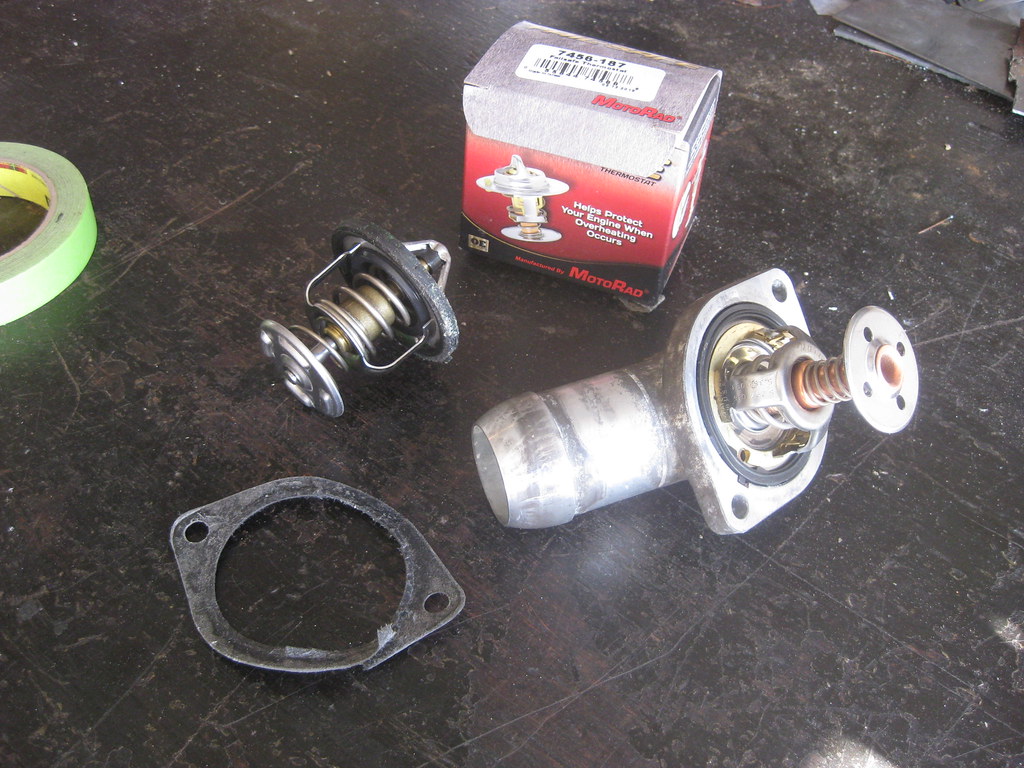
I found out that my setup had an extra gasket. The thermostat had the gasket around it and the housing also had a gasket on it. I think what happened is when I ordered the thermostat the first time they gave me the wrong year. Earlier models used a thermostat housing gasket and later models used a thermostat gasket. I ended up installing both because of the mismatched pairing. To replace the thermostat I bought a new catch can and reused all of the lost coolant because anti-freeze is very expensive these days.
My wrench finally decided to quit working. Fortunately a video on the internet showed me how to repair it.

Another problem that arose was the brake warning light began to come on. The proportioning valve and parking brake wires are spliced together and go into the warning light on the dash, so I had to check both systems. While I had it apart, I found out how the parking light system works on older GM cars, which is backwards to what I had presumed. When the light is grounded it comes on. When the ground is broken, it goes off. The tang near the top is where the wire from the dash light connects. It is insulated and held in place with plastic. Notice this piece comes straight down and turns right in an L shape, where it makes contact against the bottom piece of copper, which is in a backwards-L shape. When the parking brake is released the arm comes up and pushes on the bottom, turned-down piece, which pushes it back and breaks contact between the two pieces of copper, causing the light to go out. When you push the parking break down the arm is pulled away from the bottom, turned-down piece and contact is made between the two pieces of copper, causing a connected circuit to the dash light, which of course causes it to glow. After spending way too much time laying in the floorboard and under the car, I finally got the issue resolved.
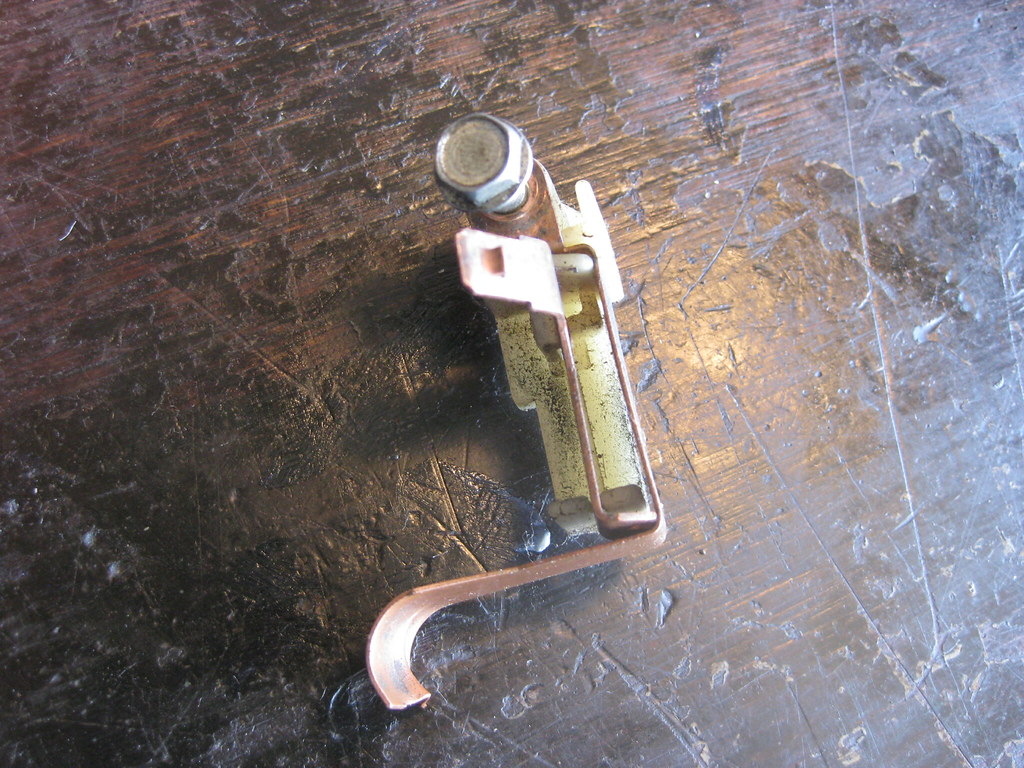
The following project, which shouldn't have been hard at all, turned into a huge problem. What should have been the simple removal of two bolts turned into completely removing the bumper, drilling out all the bolts, going to every parts house in town and some outside of town and finally having to order hardware from an online company because no one in town seems to know what a "body bolt" is. The local hardware store didn't have the sizes I needed. At long last, I had all the hardware I needed, the bumper but back together with all new, non-broken clips and time to get back to work on it. The filler neck was sitting loose behind the license plate.
I bolted the first piece in place and thankfully the new bolts were long enough to accommodate the extra thickness of the new mount.
After a lot of on again, off again, measuring and drilling and welding I had both arms mounted.
At first I had planned to make extra supports for the brace but I found it was plenty sturdy to hold everything in place securely.
In the end my goal of using existing bolt holes worked out. If I ever change the bumper all I'll have to do is unbolt this mount and attach it to the new bumper (unless the clips are all broken on the new bumper, too, which is likely).
Here's what it ended up looking like from the outside. Next on the list is diagnosing why the fuel gauge doesn't work.


